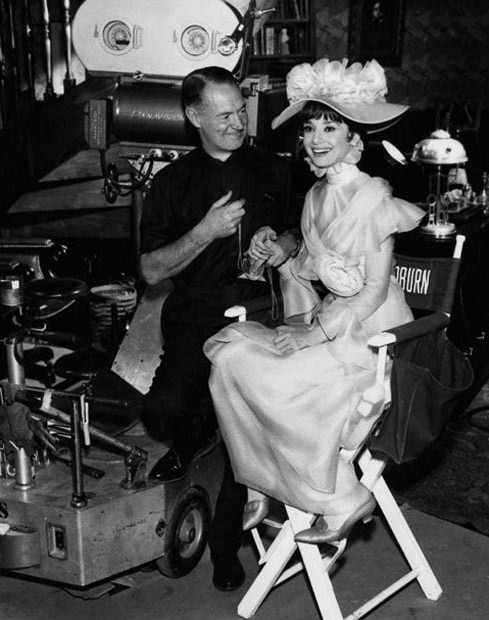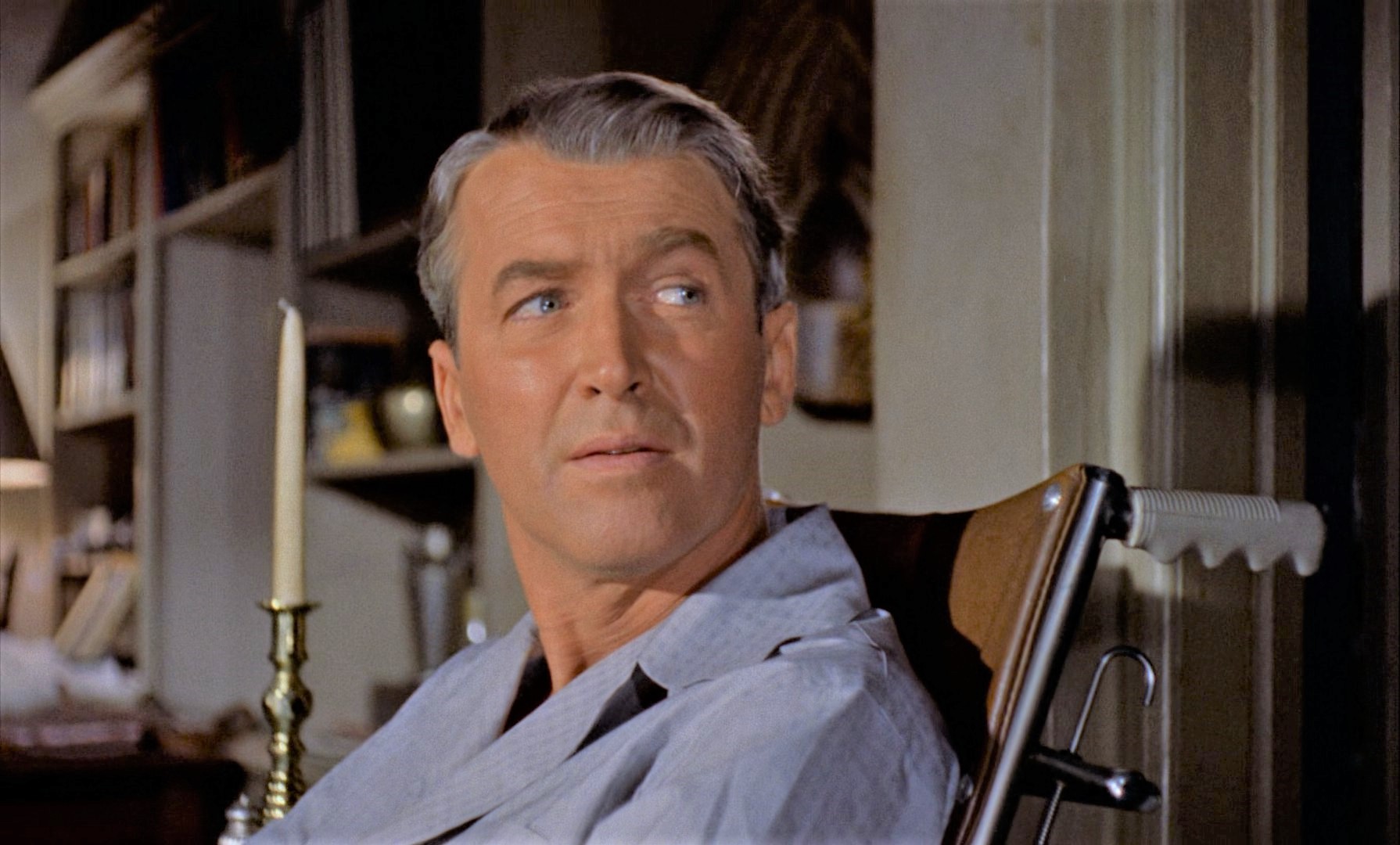|
James C. Katz
James C. Katz is an American film historian and preservationist who has restored and reconstructed a number of classic films. Though he began his career as a film producer, he concentrated his attention on preserving existing films. His film preservation projects include: ''Spartacus'', ''My Fair Lady'', and Alfred Hitchcock's ''Vertigo'' and ''Rear Window''. He frequently collaborates with Bob O'Neil and Robert A. Harris, with whom he shared the King Vidor Award for Excellence in Filmmaking at the 2000 San Luis Obispo International Film Festival The San Luis Obispo International Film Festival (SLOIFF) is an American film festival held in San Luis Obispo, California. It is a six-day annual event, showcasing contemporary and classic film screenings at the historic Fremont Theater, the Pal ....History of the San Luis Obispo International Film Festival'. In: slofilmfest.org, access date February 15, 2022. References Living people 21st-century American historians 21st ... [...More Info...] [...Related Items...] OR: [Wikipedia] [Google] [Baidu] |
History Of Film
The history of film chronicles the development of a visual art form created using film technologies that began in the late 19th century. The advent of film as an artistic medium is not clearly defined. However, the commercial, public screening of ten of the Lumière brothers' short films in Paris on 28 December 1895 can be regarded as the breakthrough of projected cinematographic motion pictures. There had been earlier cinematographic results and screenings by others like the Skladanowsky brothers, who used their self-made Bioscop to display the first moving picture show to a paying audience on 1 November 1895 in Berlin, but they lacked neither the quality, financial backing, stamina, or the luck to find the momentum that propelled the cinématographe Lumière into worldwide success. Those earliest films were in black and white, under a minute long, without recorded sound and consisted of a single shot from a steady camera. The first decade of motion pictures saw film mov ... [...More Info...] [...Related Items...] OR: [Wikipedia] [Google] [Baidu] |
Film Preservation
Film preservation, or film restoration, describes a series of ongoing efforts among film historians, archivists, museums, cinematheques, and non-profit organizations to rescue decaying film stock and preserve the images they contain. In the widest sense, preservation assures that a movie will continue to exist in as close to its original form as possible. For many years the term "preservation" was synonymous with "duplication" of film. The goal of a preservationist was to create a durable copy without any significant loss of quality. In more modern terms, film preservation includes the concepts of handling, duplication, storage, and access. The archivist seeks to protect the film and share its content with the public. Film preservation is not to be confused with film revisionism, in which long-completed films are modified with the insertion of outtakes or new musical scores, the addition of sound effects, black-and-white film being colorized, older soundtracks converted to Do ... [...More Info...] [...Related Items...] OR: [Wikipedia] [Google] [Baidu] |
Film Producer
A film producer is a person who oversees film production. Either employed by a production company or working independently, producers plan and coordinate various aspects of film production, such as selecting the script, coordinating writing, directing, editing, and arranging financing. The producer is responsible for finding and selecting promising material for development. Unless the film is based on an existing script, the producer hires a screenwriter and oversees the script's development. These activities culminate with the pitch, led by the producer, to secure the financial backing that enables production to begin. If all succeeds, the project is "greenlighted". The producer also supervises the pre-production, principal photography and post-production stages of filmmaking. A producer is also responsible for hiring a director for the film, as well as other key crew members. Whereas the director makes the creative decisions during the production, the producer typicall ... [...More Info...] [...Related Items...] OR: [Wikipedia] [Google] [Baidu] |
Spartacus (film)
''Spartacus'' is a 1960 American epic historical drama film directed by Stanley Kubrick, written by Dalton Trumbo, and based on the 1951 novel of the same title by Howard Fast. It is inspired by the life story of Spartacus, the leader of a slave revolt in antiquity, and the events of the Third Servile War. It stars Kirk Douglas in the title role, Laurence Olivier as Roman general and politician Marcus Licinius Crassus, Peter Ustinov as slave trader Lentulus Batiatus, John Gavin as Julius Caesar, Jean Simmons as Varinia, Charles Laughton as Sempronius Gracchus, and Tony Curtis as Antoninus. Douglas, whose company Bryna Productions was producing the film, removed original director Anthony Mann after the first week of shooting. Kubrick, with whom Douglas had made '' Paths of Glory'' (1957), was brought on board to take over direction.Kirk Douglas. ''The Ragman's Son'' (Autobiography). Pocket Books, 1990. Chapter 26: The Wars of Spartacus. It was the only film directed by ... [...More Info...] [...Related Items...] OR: [Wikipedia] [Google] [Baidu] |
My Fair Lady (film)
''My Fair Lady'' is a 1964 American musical drama film adapted from the 1956 Lerner and Loewe stage musical based on George Bernard Shaw's 1913 stage play '' Pygmalion''. With a screenplay by Alan Jay Lerner and directed by George Cukor, the film depicts a poor Cockney flower-seller named Eliza Doolittle who overhears an arrogant phonetics professor, Henry Higgins, as he casually wagers that he could teach her to speak "proper" English, thereby making her presentable in the high society of Edwardian London. The film stars Audrey Hepburn as Eliza Doolittle and Rex Harrison as Henry Higgins, with Stanley Holloway, Gladys Cooper and Wilfrid Hyde-White in supporting roles. A critical and commercial success, it became the second highest-grossing film of 1964 and won eight Academy Awards, including Best Picture, Best Director and Best Actor. In 1998, the American Film Institute named it the 91st greatest American film of all time. In 2006 it was ranked eighth in the AFI's Gre ... [...More Info...] [...Related Items...] OR: [Wikipedia] [Google] [Baidu] |
Alfred Hitchcock
Sir Alfred Joseph Hitchcock (13 August 1899 – 29 April 1980) was an English filmmaker. He is widely regarded as one of the most influential figures in the history of cinema. In a career spanning six decades, he directed over 50 feature films, many of which are still widely watched and studied today. Known as the "Master of Suspense", he became as well known as any of his actors thanks to his many interviews, his cameo roles in most of his films, and his hosting and producing the television anthology ''Alfred Hitchcock Presents'' (1955–65). His films garnered 46 Academy Award nominations, including six wins, although he never won the award for Best Director despite five nominations. Hitchcock initially trained as a technical clerk and copy writer before entering the film industry in 1919 as a title card designer. His directorial debut was the British-German silent film '' The Pleasure Garden'' (1925). His first successful film, '' The Lodger: A Story of the London Fo ... [...More Info...] [...Related Items...] OR: [Wikipedia] [Google] [Baidu] |
Vertigo (film)
''Vertigo'' is a 1958 American film noir psychological thriller film directed and produced by Alfred Hitchcock. The story was based on the 1954 novel ''D'entre les morts'' (''From Among the Dead'') by Boileau-Narcejac. The screenplay was written by Alec Coppel and Samuel A. Taylor. The film stars James Stewart as former police detective John "Scottie" Ferguson, who has retired because an incident in the line of duty has caused him to develop acrophobia (an extreme fear of heights) and vertigo, a false sense of rotational movement. Scottie is hired by an acquaintance, Gavin Elster, as a private investigator to follow Gavin's wife Madeleine (Kim Novak), who is behaving strangely. The film was shot on location in the city of San Francisco, California, as well as in Mission San Juan Bautista, Big Basin Redwoods State Park, Cypress Point on 17-Mile Drive, and Paramount Studios in Hollywood. It is the first film to use the dolly zoom, an in-camera effect that distorts perspective t ... [...More Info...] [...Related Items...] OR: [Wikipedia] [Google] [Baidu] |
Rear Window
''Rear Window'' is a 1954 American mystery thriller film directed by Alfred Hitchcock and written by John Michael Hayes based on Cornell Woolrich's 1942 short story "It Had to Be Murder". Originally released by Paramount Pictures, the film stars James Stewart, Grace Kelly, Wendell Corey, Thelma Ritter, and Raymond Burr. It was screened at the 1954 Venice Film Festival. ''Rear Window'' is considered by many filmgoers, critics, and scholars to be one of Hitchcock's best and one of the greatest films ever made. It received four Academy Award nominations and was ranked number 42 on AFI's 100 Years...100 Movies list and number 48 on the 10th-anniversary edition, and in 1997 was added to the United States National Film Registry in the Library of Congress as being "culturally, historically, or aesthetically significant". Plot Recuperating from a broken leg, professional photographer L. B. "Jeff" Jefferies is confined to a wheelchair in his apartment in Greenwich Village, Man ... [...More Info...] [...Related Items...] OR: [Wikipedia] [Google] [Baidu] |
Robert A
The name Robert is an ancient Germanic given name, from Proto-Germanic "fame" and "bright" (''Hrōþiberhtaz''). Compare Old Dutch ''Robrecht'' and Old High German ''Hrodebert'' (a compound of ''Hrōþ, Hruod'' ( non, Hróðr) "fame, glory, honour, praise, renown" and ''berht'' "bright, light, shining"). It is the second most frequently used given name of ancient Germanic origin. It is also in use Robert (surname), as a surname. Another commonly used form of the name is Rupert (name), Rupert. After becoming widely used in Continental Europe it entered England in its Old French form ''Robert'', where an Old English cognate form (''Hrēodbēorht'', ''Hrodberht'', ''Hrēodbēorð'', ''Hrœdbœrð'', ''Hrœdberð'', ''Hrōðberχtŕ'') had existed before the Norman Conquest. The feminine version is Roberta (given name), Roberta. The Italian, Portuguese, and Spanish form is Roberto (given name), Roberto. Robert is also a common name in many Germanic languages, including English ... [...More Info...] [...Related Items...] OR: [Wikipedia] [Google] [Baidu] |
San Luis Obispo International Film Festival
The San Luis Obispo International Film Festival (SLOIFF) is an American film festival held in San Luis Obispo, California. It is a six-day annual event, showcasing contemporary and classic film screenings at the historic Fremont Theater, the Palm Theatre, and other venues in Atascadero, Paso Robles, and the neighboring seaside towns of Avila Beach and Pismo Beach. The current festival includes three competitions, the George Sidney Independent Film Competition, the Central Coast Filmmakers Showcase, and the Young Filmmakers of Tomorrow Competition. The San Luis Obispo International Film Festival was founded in 1993 by Mary Harris, Cathy Peacock, Jim Dee, Patty Dee and Lee Cogan. Wendy Eidson is the current festival director. She has held this position since 2007. Competitions George Sidney Independent Film Competition The George Sidney Independent Film Competition was introduced in 1996, in honor of the first recipient of the festival's King Vidor Memorial Award. Accepted f ... [...More Info...] [...Related Items...] OR: [Wikipedia] [Google] [Baidu] |
Living People
Related categories * :Year of birth missing (living people) / :Year of birth unknown * :Date of birth missing (living people) / :Date of birth unknown * :Place of birth missing (living people) / :Place of birth unknown * :Year of death missing / :Year of death unknown * :Date of death missing / :Date of death unknown * :Place of death missing / :Place of death unknown * :Missing middle or first names See also * :Dead people * :Template:L, which generates this category or death years, and birth year and sort keys. : {{DEFAULTSORT:Living people 21st-century people People by status ... [...More Info...] [...Related Items...] OR: [Wikipedia] [Google] [Baidu] |
21st-century American Historians
The 1st century was the century spanning AD 1 ( I) through AD 100 ( C) according to the Julian calendar. It is often written as the or to distinguish it from the 1st century BC (or BCE) which preceded it. The 1st century is considered part of the Classical era, epoch, or historical period. The 1st century also saw the appearance of Christianity. During this period, Europe, North Africa and the Near East fell under increasing domination by the Roman Empire, which continued expanding, most notably conquering Britain under the emperor Claudius (AD 43). The reforms introduced by Augustus during his long reign stabilized the empire after the turmoil of the previous century's civil wars. Later in the century the Julio-Claudian dynasty, which had been founded by Augustus, came to an end with the suicide of Nero in AD 68. There followed the famous Year of Four Emperors, a brief period of civil war and instability, which was finally brought to an end by Vespasian, ninth Roman emperor, a ... [...More Info...] [...Related Items...] OR: [Wikipedia] [Google] [Baidu] |







